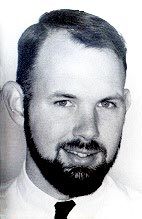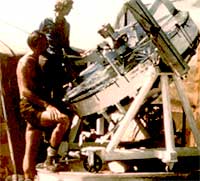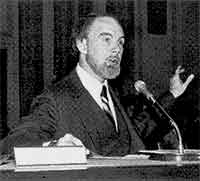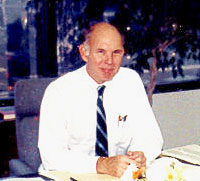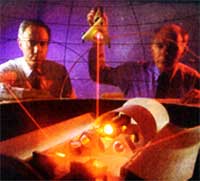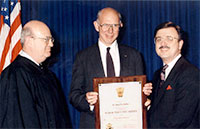Dr. John D. Rather
President of RCIG, Dr. John D.G. Rather, has a proven history of mobilizing scientists and engineers — leaders in physical and biogenetic sciences — to achieve high-leverage, strategic advantages for industry and government.
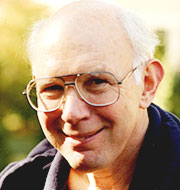
Early in his career, Dr. Rather achieved excellence in hands-on research work at the Oak Ridge and Lawrence Livermore National Laboratories and the National Radio Astronomy Observatory. In his mid-30s, he progressed to senior management positions that included two Vice Presidencies in the aerospace industry. Subsequently, he held Senior Executive Service appointments in the U.S. Government that required deep, comprehensive knowledge of science and technology. After a decade in medical and microelectronic research in an academic setting, he founded RCIG in 2006.
John Rather's diverse career experiences have forged the leadership qualities and technical judgment that are essential to successful, high-payoff technical endeavors. Dr. Rather can lead business and government projects to new levels of research excellence.
John Rather's Accomplishments — a Summary
- Bachelor of Science received "With Honors" (University of Tennessee, Knoxville, 1963) while working full-time for five years as a Research Associate at nearby Oak Ridge National Laboratory (ORNL). His first employment was in the Instrumentation and Controls Division, where he mastered electronic techniques for physical measurements, particularly in areas related to nuclear physics and chemistry.
- Rather transferred to the Controlled Thermonuclear Research Division at ORNL where he worked under Robert J. Mackin. Rather's work on very large controlled magnetic fusion experiments provided broad experience in experimental physics, including high vacuum, cryogenics, electromagnetics, particle physics, nuclear radiation, thermal effects, thin films, high voltage, high magnetic fields, plasma diagnostics, radio frequency measurements, optical measurements, computers, data management and data reduction.
- Rather moved to the Lawrence Livermore National Laboratory (LLNL) where he worked under Nicholas Christofilos. He focused on development of microwave and optical diagnostics for the ASTRON fusion experiment and the Defense Advanced Research Projects Agency (DARPA) particle beam weapon effort known as SEESAW. He was frequently in charge of all research activities on experimental shifts. Some of the "grandchildren" of the diagnostics systems he conceived, designed and built for measuring plasma instabilities are still commonly used in plasma physics research
- While working full-time at LLNL, John Rather pursued graduate studies in astronomy (University of California, Berkeley) and obtained an M.A. (1967) and a Ph.D. (1970). He initiated important original research on asteroids, planetary moons and the planet Jupiter. He developed a concept for the interaction of the Jovian satellite Io with Jupiter's magnetic field which is sometimes called "the Rather effect." His prediction that Io would be found to have a molten interior was confirmed a decade later when volcanism was observed by Voyagers 1 and 2.

1968
- As a Graduate Research Assistant to Prof. George Field, Rather became interested in interstellar shock wave generation. He co-authored with Field two important papers on the roles of infrared molecular and atomic line radiation in post-shock gas cooling. Subsequently, at the University of California Radio Astronomy Laboratory (UC-RAL), John Rather performed the first extragalactic observations at wavelengths shorter than 1 centimeter, and this became his Ph.D. thesis topic. He made the first successful observations of quasars at sub-centimeter wavelengths under his thesis advisor Prof. W. J. Welch, now Director Emeritus of UC-RAL.
- After his Ph.D. work, Dr. Rather worked for the National Radio Astronomy Observatory (NRAO) at their Kitt Peak, Arizona, facility. There he built the state-of-the-art receiver for radio astronomy at 1 millimeter wavelengths and used it to make the first successful detection of Saturn's rings at radio astronomy wavelengths, thereby estimating the rings' composition. He also made the first accurate observations of quasars at 1 millimeter. Ten years of experience in observational astronomy gave Dr. Rather thorough knowledge of the detection and processing of extremely weak signals buried in noise. He had also mastered optical and radio spectroscopy. Most importantly, he learned the physics of all sorts of physical environments and how to extract useful information from difficult situations.

1973
- In 1974 and 1975, Dr. Rather was chosen to participate in the Department of Defense (DoD) Long Range Research and Development Planning Program (LR2DP2), a $10 million effort mandated by the U.S. Secretary of Defense, to devise technological responses providing decisive advantages for the United States in potential future confrontations. Rather was chosen to integrate technical findings and to write a final report consolidating the program's technology recommendations. He carried out extensive liaison with senior DoD staff, the Army, Navy and Air Force Science Boards, senior managers in the private sector and the National Laboratories. Among the key recommendations implemented were stealth technologies, precision-guided cruise missiles, the Global Position Satellite (GPS) system, hardened target penetrators, and anti-ballistic missile systems.
- In 1975, Rather opened a new Los Angeles office for W.J. Schafer Associates, Inc. (WJSA), a systems engineering and technology assessment contractor. Rather's technology concepts gained contracts from the USAF Space Division, NASA's Jet Propulsion Laboratory (JPL) and other sources. Rather served as Program Manager or Principal Investigator on eight contracts for the DoD and NASA; for JPL, he performed two detailed studies of remote sensing spacecraft options, and suggested some of the experiments later performed by the Galileo spacecraft at Jupiter.
- In late 1978, Dr. John Rather was invited to join Braddock, Dunn, and MacDonald, Inc., later known as BDM International Corporation. As Principal Scientist, Rather was asked by Director of DARPA Dr. Robert Fossum to review U.S. laser research in order to investigate how the Free Electron Laser (FEL) would play in the overall laser research and development arena. Dr. Rather led this two-year effort and produced many new technology recommendations based on detailed analysis of technologies, missions and applications, later followed by five related contract efforts at BDM.
- Soon after coming to BDM, near Washington D.C., John Rather became involved with members of the U.S. Senate Select Committee on Intelligence; the House and Senate Armed Services Committees; the Senate Subcommittee on Science, Technology and Space; and the President's Office of Science and Technology Policy. Senator Howell Heflin took such interest in Rather's ideas concerning high-energy lasers that he sponsored hearings on this subject before the Senate Subcommittee on Science, Technology, and Space. Dr. Rather gave the opening testimony (November 1979) and provided classified testimony (1980). Subsequently he often provided formal and informal testimony and advice to Congress regarding major national technology programs. Dr. Rather began to meet regularly with President Ronald Reagan's Science Advisor, George ("Jay") Keyworth in 1981 and continued to provide ideas and assessments throughout Keyworth's tenure.

1979
- During this period, Dr. Rather published widely quoted papers in such journals as Aeronautics and Astronautics, Defense Science and Electronics and Defense Science 2000. They concerned the need to rethink space and defense missions in the context of new technological opportunities. His paper in Defense Science 2000 entitled "The U.S. High Energy Laser Program: Is There a Ray of Hope?" won the Gnosis award for best defense paper of 1983. As a principal speaker/panelist in a National Endowment for the Humanities symposium, "Do We Need Outer Space?" he focused on the question of what activities are legitimate for national thrusts in space. These activities expanded Dr. Rather's visibility and contributed to his involvement with the founding of the Strategic Defense Initiative Organization (SDIO).

1983
- Rather was a panel member in the USAF Advanced Beam Weapons Concept Definition Study (1982) and testified before the USAF Scientific Advisory Board on this subject. When the Reagan administration's Strategic Defense Initiative Organization (SDIO) was announced (March 1983), he consulted for the Fletcher Committee (Defense Technology Study Team) concerning the role of lasers in the SDI mission. Rather argued for an initial system based upon Ground-Based Free Electron Lasers (GBFELs) with Space Based Relay mirrors; the SDIO eventually adopted this technology recommendation
- John Rather became Vice President for Research and Technology Innovation at Kaman Aerospace Corporation (1984), a highly diversified Fortune 500 firm with $800 million revenues. Company President Fred Smith charged Rather to lead the company into new areas that would have particular interest to the then-new SDIO. Rather mobilized a crash effort generating a breakthrough technology program to offer SDIO head General James Abrahamson.

1986
What emerged was a radical new way to achieve and demonstrate laser pointing and tracking at the level of precision required for an actual laser weapon by directly controlling the wave fronts of light. The new technology was initially named PATIE for "Pointing and Tracking Integrated Experiment" and later became the STARLAB Wavefront Control Experiment (WCE).
PATIE
- In addition to SDIO liaison, Rather gave numerous briefings at NASA headquarters, Marshall Space Flight Center (MSFC) and Kennedy Space Center. He briefed NASA Administrator James Beggs, and met with him on several occasions to coordinate NASA's role with SDIO. When MSFC accepted responsibility for payload control and science operations, Rather led many meetings with the Director of MSFC and his senior staff, usually accompanied by his technical staff and consultant astronauts Jack Lousma (Skylab and Space Shuttle pilot) and former U.S. Senator Harrison "Jack" Schmidt (who walked on the moon in the Apollo 17 mission of 1972). A benefit from these experiences was in-depth exposure to the details and problems of manned space flight.
- When Kaman Aerospace Corp. was chosen to be co-prime contractor with Lockheed to build Rather's STARLAB WCE laser pointing experiment, he persuaded Kaman to open a new system integration facility (with clean room) at Kaman Sciences in Colorado Springs, CO, and to established a new electro-optics laboratory in Tucson, AZ. The total value of the WCE program revenues to Kaman exceeded $85 million; John Rather's creation led to $630 million in total STARLAB funding, shared among NASA's Marshall Space Flight Center, Lockheed, Ball Aerospace, SAIC, United Technologies, Itek and other participants.
- In five years at Kaman, Dr. Rather engendered about $125 million in new-start technology programs. He also managed the company's Advanced Technology Innovative Research and Development (IR&D) efforts. They invented and patented a revolutionary new approach for the construction of very large, low cost, low weight telescopes and laser beam expanders for deployment on the ground or in space. This new optical technology was named PAMELA for "Phased Array Mirror, Extendable Large Aperture." It became the subject of the $10 million SDIO/DARPA/NASA technology development effort from 1989–1996. Another IR&D effort at Kaman led to the Controlled-Length Strut, a high-precision adaptive structural component that became a centerpiece of NASA JPL's Controlled Structures and Large Deployable Reflector research. Another effort led to the Coarse-Fine Wavefront Sensor for adaptive optics systems, which Rather also patented.
- In 1989, Dr. Rather took a sabbatical year at Science Research Laboratory Incorporated in Washington, D.C. Director of Lawrence Livermore National Laboratory (LLNL) Dr. John Nuckolls asked Rather to explore new uses for that large laboratory's talents and capabilities. Dr. Rather developed new technology concepts responsive to the needs of the Department of Defense, the Department of Energy, and NASA that could enhance LLNL's abilities to transfer advances in technology quickly to the government and commercial sectors. He interacted with top management of large private corporations to ensure that the proposed roles of LLNL and industry would be harmonious. Rather also conceived a means of laser power transmission to enhance space-mission capabilities while reducing mission costs. Dr. Rather frequently promoted LLNL technology potential for civilian use to NASA headquarters, leading to his six years in the Senior Executive Service (SES) of the United States government.

1991
- Rather was recruited by the Deputy Administrator of NASA, J.R. Thompson, to come to the space agency as Assistant Director for Space Technology (Program Development), a level four position in the Senior Executive Service of the U.S. Government. Rather was responsible for advanced concepts research and development, program planning and development of innovative space systems programs. He coordinated with other agencies, such as the Department of Defense and the Department of Energy, to develop multiple-use research and technology programs that would produce maximum benefits for future United States space systems.
- The first new program Rather launched at NASA headquarters rapidly developed into a thriving government-industry joint effort named Project SELENE, for "SpacE Laser ENErgy." This concept for space power and propulsion using power beamed from the Earth with advanced adaptive optics systems originated with Rather in 1990. The new technologies implicit in the SELENE approach still have important implications for drastically reducing the cost of geostationary satellite operations, the difficulties of developing the lunar base, and other high power applications in cislunar space. These technology concepts couple favorably to an expanded Mars mission with quicker, lower-cost expansion of our abilities to explore there.
- Rather initiated several other revolutionary technology studies and development efforts at NASA: (1) a design for an easily deployable, 20-meter diameter optical/electronic telescope in space to probe the geometry of the universe and to analyze planets of other stars, (2) a concept for a low-cost spacecraft to discover near-Earth asteroids and a new type of ground-based imaging radar to evaluate their threat significance, (3) a new way to build a permanent colony on the moon at much reduced cost; and (4) new applications of superconductivity for space launch and surface transportation, a collaborative effort with Dr. James Powell of Brookhaven National Laboratory. (The latter concept, called STARTRAM, could lead to a highly efficient, low cost space launch system deployable within a decade. It also has implications for extremely efficient, very rapid transport systems on Earth.)
- In 1992, John Rather organized and chaired an interdisciplinary workshop mandated by the U.S. House of Representatives. The workshop was charged to create and evaluate ways and means of intercepting and deflecting asteroids and comets that may threaten impact with the Earth. The findings were presented by Dr. Rather in testimony before the House Subcommittee on Space of the Committee on Science, Space, and Technology (March 1993). Dr. Rather presented his ideas for a revolutionary approach to asteroid protection for the Earth to a Symposium on Global Emergencies at Erice, Sicily (April 1993). Amplifications on this concept were presented at the Lawrence Livermore National Laboratory (LLNL) Planetary Defense Workshop (May 1995).
- Dr. Rather was invited to join the Barbara Ann Karmanos Cancer Institute (KCI; Detroit, MI), affiliated with Wayne State University (WSU). Its President had met John during Mrs. Ruth Rather's own illness. Dr. Rather persuaded him that cross-fertilization from other spheres of science and technology might make a favorable difference in cancer mortality. Dr. Rather began as Special Assistant to the President for Innovative Development at Karmanos (February 1997) and later became Director, Innovation and Development. Dr. Rather quickly mobilized participation from two national laboratories, four private corporations and numerous consultants to focus on very early detection and elimination of cancer.

1997
- Dr. Rather was appointed University Professor by Wayne State University (June 2001), an honor extended to only four other people in the history of the University. In this capacity, he broadened the scope of his efforts to expedite development of new technologies for industry and the commercial mass market. Three areas receiving particular attention were Life Sciences & Medicine, National Security and Industrial Products. He founded a Technology Innovation Systems Laboratory in the Physics Department and served as Research Professor in the Smart Sensors & Integrated Microsystems Laboratory (SSIML) of the Department of Engineering.

2001
- In 2006, Dr. Rather returned to Oak Ridge, Tennessee, where he began his career in 1958. He immediately founded RCIG, Inc. and obtained his first innovative-technology contract with a private corporation in one month.
- In 2015, Dr. Rather founded Sisyphus Energy Inc. with Dr. Dean S. Hartley III, Principal of Hartley Consulting. Sisyphus represents a new concept in grid-level storage of electrical energy. It uses superconducting magnetic levitation to move large masses uphill during the night when energy is cheap, storing the electrical energy as gravitational potential energy. It moves the masses back downhill in the day when energy is expensive, recovering more than 90% of the potential energy as electrical energy.

